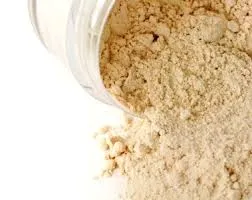The Chemical Interaction between Ammonium Thiocyanate and Silver Nitrate
The interaction between ammonium thiocyanate (NH4SCN) and silver nitrate (AgNO3) is a fascinating topic in the field of chemistry, showcasing fundamental principles such as solubility, precipitation reactions, and coordination chemistry. This article will explore the nature of these compounds, the resulting reactions when they are combined, and their broader implications in various scientific contexts.
Overview of the Compounds
Ammonium Thiocyanate (NH4SCN)
Ammonium thiocyanate is a white crystalline solid that is soluble in water. It comprises ammonium cations (NH4+) and thiocyanate anions (SCN-). The thiocyanate ion is known for its ability to form coordination complexes, and it can act as a ligand in various reactions. This compound is commonly used in laboratories and various industrial applications, including the production of thiocyanate salts and as a reagent in analytical chemistry.
Silver Nitrate (AgNO3)
Silver nitrate is another significant compound in the realm of chemistry, characterized by its white crystalline appearance and high solubility in water. It consists of silver cations (Ag+) and nitrate anions (NO3-). Silver nitrate has a long history in photography and is a vital reagent in the synthesis of various silver compounds. Furthermore, due to its antimicrobial properties, it is also utilized in medicine.
The Precipitation Reaction
When aqueous solutions of ammonium thiocyanate and silver nitrate are combined, a notable chemical reaction occurs. The reaction can be represented by the following equation
nh4scn agno3

\[ \text{Ag}^+ (aq) + \text{SCN}^- (aq) \rightarrow \text{AgSCN} (s) \]
In this reaction, the silver cation reacts with the thiocyanate anion to form a precipitate of silver thiocyanate (AgSCN), which appears as a white solid. This precipitation reaction is significant as it demonstrates the principle of solubility product (Ksp) and is often utilized in qualitative analysis to detect the presence of silver ions in a solution.
The formation of a precipitate indicates a decrease in solubility due to the reduced concentration of the reactants. It showcases how ions can interact in solutions to form more stable, solid compounds under certain conditions.
Applications and Significance
The reaction between NH4SCN and AgNO3 is not only an educational demonstration in many chemistry laboratories but also has practical applications in various fields. One crucial application is in the detection and quantification of silver ions in various samples. By observing the formation of the white precipitate, chemists can confirm the presence of silver in a mixture.
Additionally, this reaction can serve as a fundamental example in courses focusing on coordination chemistry. The study of the thiocyanate ion and its coordination complexes can lead to a deeper understanding of ligand behavior and the formation of complex ions.
Moreover, silver thiocyanate has potential applications in the field of electronics, particularly in the fabrication of electronic materials, where silver's conductivity is a prized property. Exploring such interactions lays the groundwork for developing innovative materials with tailored properties.
Conclusion
In conclusion, the interaction between ammonium thiocyanate and silver nitrate is a prime example of how basic chemical principles manifest in observable phenomena. The formation of silver thiocyanate not only serves as an educational tool in chemistry classrooms but also has practical implications in analytical chemistry and materials science. Understanding these interactions enriches our knowledge of chemical principles and opens avenues for further research and application. As scientists continue to explore and manipulate these reactions, the potential for discovering new materials and compounds remains vast, highlighting the ever-evolving landscape of chemical research.

